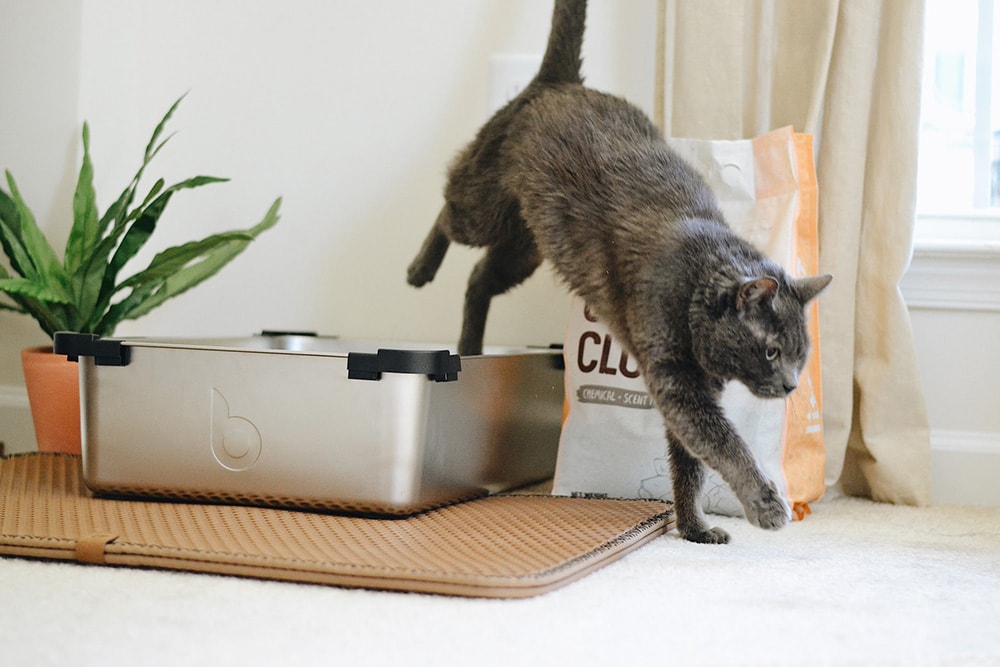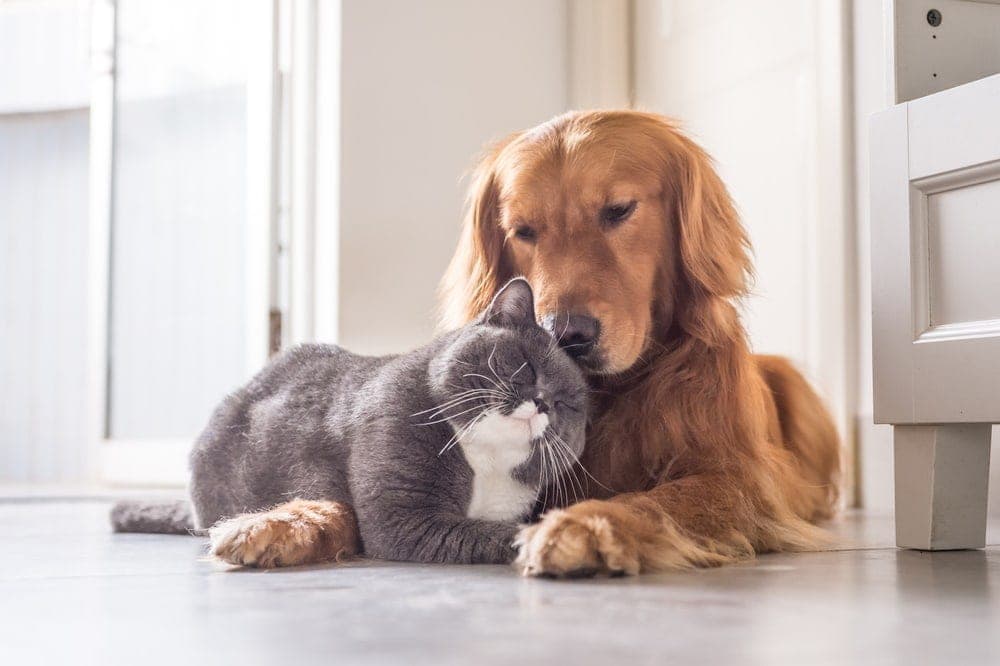How to Tell if a Cat Has Arthritis: 8 Vet-Reviewed Signs
Updated on
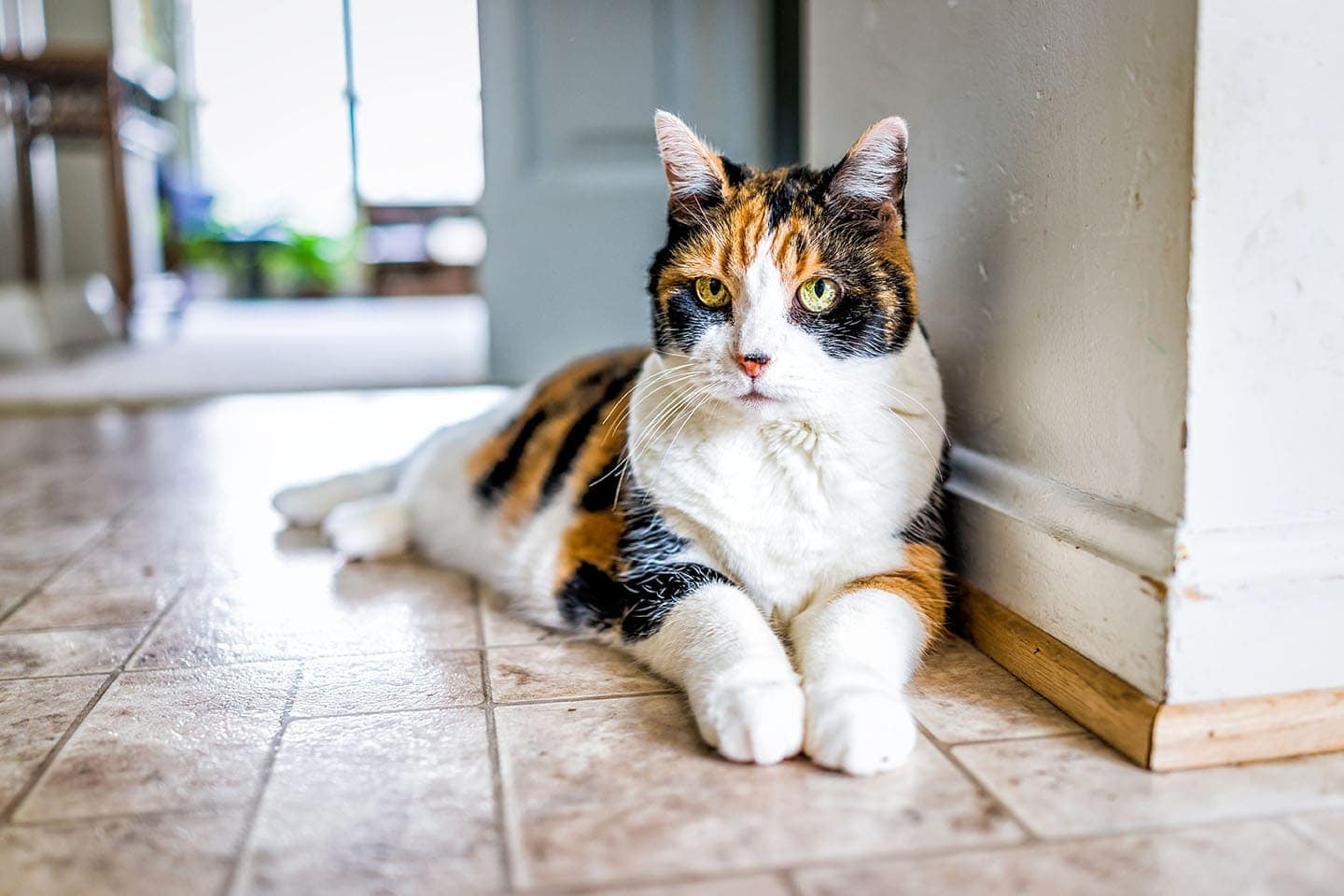
Many people may have heard of arthritis, but some may not know what it actually is, only understanding that it is a condition that affects the joints. Arthritis is a blanket term for many kinds of joint pain or disease, and it can include many different types of issues affecting the joints. It’s common in animals and humans alike.
Since arthritis is an ailment that can affect cats, responsible pet owners should be aware if their furry feline has developed arthritis. But how can you tell if your cat has it?
In this article, we’ll go through the general symptoms and signs for most types of arthritis so you can be aware of your cat’s health and condition and maintain a positive quality of life for them.
What is Arthritis?
Previously, we gave you a general overview of arthritis. Osteoarthritis is the most common type of arthritis as it is the type that comes on as a degenerative condition rather than as a separate disease with origins unrelated to age.
Osteoarthritis will be most common in cats who are elderly, have had more than a normal amount of activity leading to joint wearing or have had previous injuries such as bone fractures. It’s worth noting that cats can get other types of arthritis, sometimes secondary to other complications, even if they are young.
The 8 Signs Your Cat Has Arthritis
1. General Stiffness
In the joints of healthy cats, the joint connections slide past each other with the help of fluid and cartilage. In cases of osteoarthritis, the cartilage has worn away, causing the joints to rub directly against each other. This friction causes inflammation, bony changes and pain. You will see this as stiffness in your cat’s joints. This stiffness may resemble limping if the arthritis is localized (only in one place).
This stiffness will be most apparent after periods of sleep or rest, particularly as your cat shifts their weight to their affected leg joints. The stiffness may affect their general mobility, and they may have trouble with basic movements such as accessing the cat flat or bending down to their food or water bowls.
2. They Can’t Jump Anymore
In addition to general stiffness, arthritis will make jarring movements especially painful for your cat. Your usually agile cat may now struggle to jump at all, and they may look for alternative routes to areas they would usually just pounce onto or find themselves “stuck” on a high surface such as a bed, too afraid of the pain of jumping.
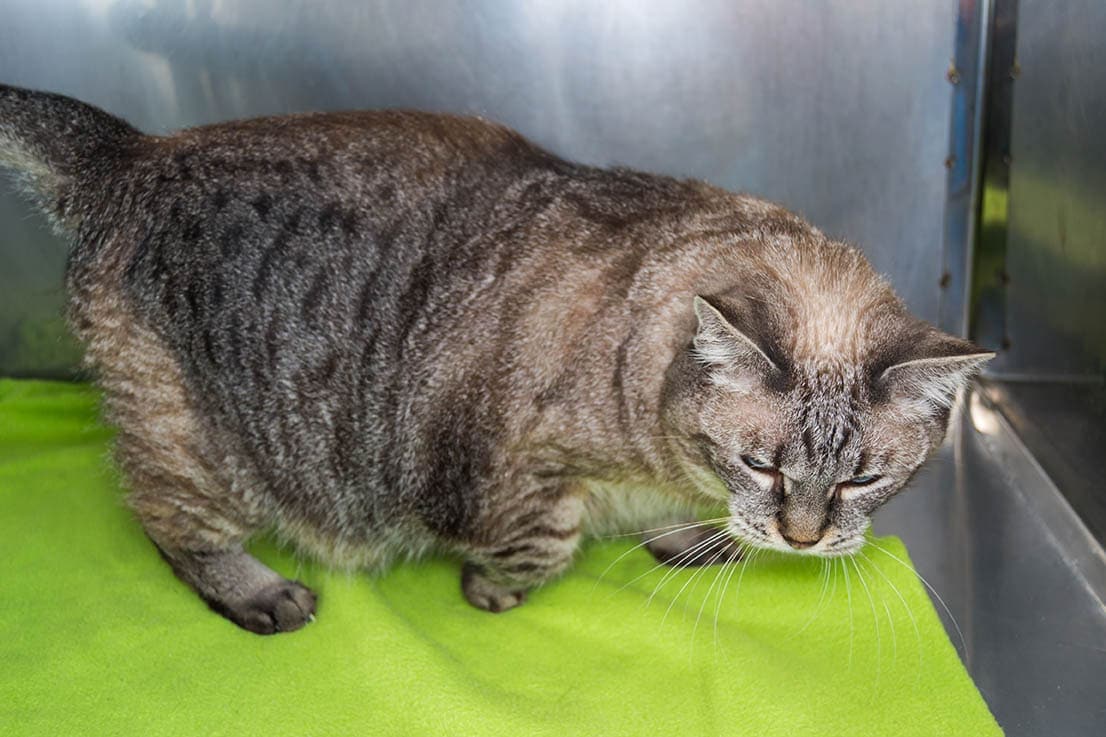
3. Avoidance of Stairs
These jarring motions don’t just include jumping. Moving on inclines can add extra pressure to your cat’s movements and put more weight on sensitive joints. Your cat may altogether avoid stairs, canceling them out of their ability.
In milder cases, they may still utilize stairs but find it more difficult than expected, taking the movements a lot slower. An unexpected jarring movement could cause them to lose balance and may tumble down inclines, such as stairs.
4. They Are Reluctant to Get Up
Arthritis pain is usually a lot worse during the night or after sleeping. This is due to the mammalian body making less of the anti-inflammatory agent cortisol at night. Getting up from a resting position can also be extra uncomfortable for an arthritic cat due to the extra work required to work against gravity, pushing the body up from the ground.
If your cat is extra lethargic and very slow, and reluctant to get out of their sleeping spot even for food, this could be a sign they are suffering from some form of pain.
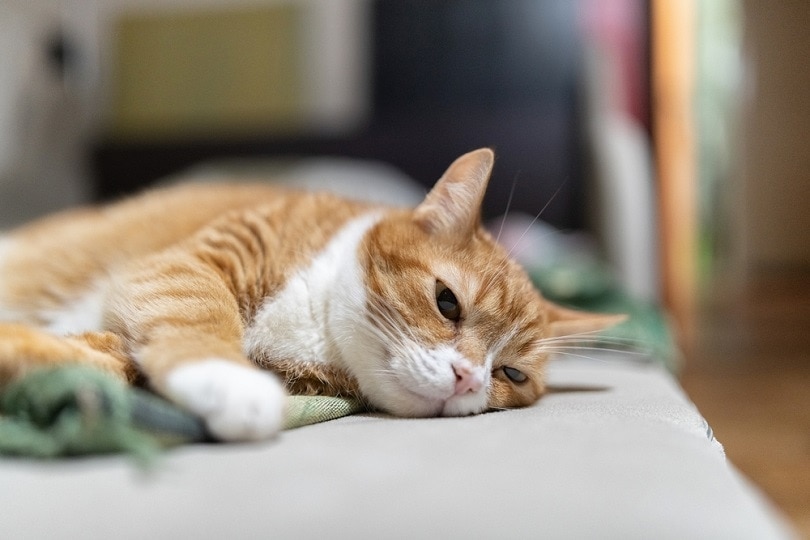
5. They’re Tender in Some Places
If your cat has some inflammation in its joints, you should be able to tell by their reaction to touch. Be careful as you examine them so as not to increase their pain. You can gently feel around their joints from the feet up to the shoulders, one leg at a time. When you reach a tender place, your cat will likely respond.
Additionally, if you feel both the front legs simultaneously, you may be able to physically identify a size difference in inflamed joints compared to a healthier joint. Looking for this missing symmetry can be a great sign to pick up on, but it isn’t always dependable as both sides may well be abnormal.
6. Unexpected Aggression
We’ve all been there. When we are sick, tired, or in pain, we tend to have much shorter fuses. We find ourselves unable to give the energy to exercise patience and kindness. When your cat is in pain, it can exhibit the same behavioral signs.
A cat who has arthritic pain may be more irritable. They might be less tolerant of being touched, stroked, or picked up. They might also be a lot more aggressive towards you or other animals in the household. Ultimately, you may find them isolating themselves and avoiding many social interactions.
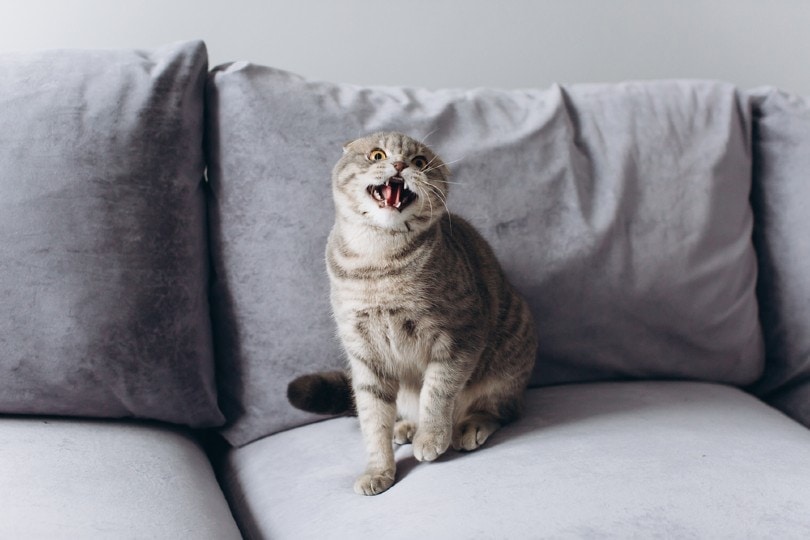
7. They’re Not Grooming as Much
We all know cats take a great deal of pride in their appearance and dedicate a large chunk of the day grooming themselves. Joint pain for your cat can be made worse when they try to contort themselves into grooming positions or from the repetitive nature of licking themselves.
A cat with joint pain may spend less time grooming or groom less often. What you may see is a scruffy coat, which may become matted. They may also get overgrown nails from lower levels of activity.
Additionally, an interesting sign may be seen in where they chose to groom. Grooming is a response cats utilize on injuries, coining the phrase “licking your wounds.” If your cat has pain in its joints, you may see overgrooming in these areas. This may look like bald spots around the joints.
8. Struggling to Use Their Litter Box
Many litter boxes in the home have extended sides. This is a fantastic design to help keep messy kitty litter contained and not scattered around the home. However, these lips can pose a barrier to arthritic cats who are struggling with their mobility.
Your cat may be seen struggling to scale the side of their litter box to get inside. Or if they find the box too daunting and painful, then the rate of accidents around the home will surely increase.
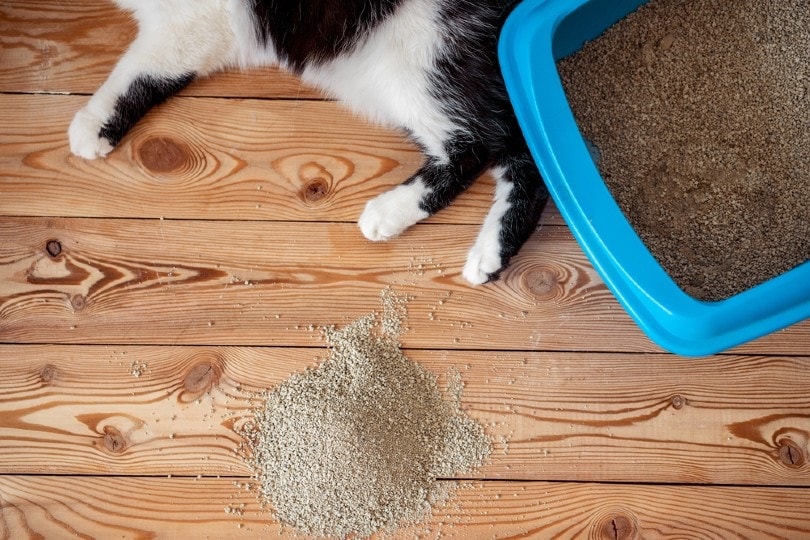
Final Thoughts
If you suspect arthritis in your cat, you should see a vet as soon as you can. It’s critical to rule out any other serious illnesses as the cause of arthritis. From there, proper diagnosis is the key to beginning the journey of managing your cat through their pain and maintaining good welfare for them. Your vet will start with a physical examination in which they may find indications your cat has osteoarthritis. For definitive diagnosis of osteoarthritis, your vet may recommend x-rays to visualize bony changes.
There are many resources your vet can give you to help you provide your cat with all that they need in their environment and diet to manage their degenerative issue. Supplements and prescribed medications from the vet can help manage pain and reduce inflammation. Cats with arthritis can go on to live long, healthy lives with attentive and caring owners.
Featured Image Credit: Kristi Blokhin, Shutterstock



